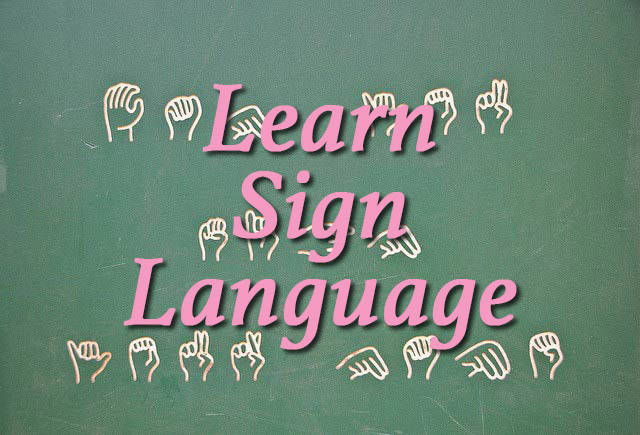To give a very brief overview of American Sign Language, it has its own grammatical structure that (unfortunately) varies widely from spoken English. Similar to Australian Sign Language, most of the gestures that denote certain words and phrases are completely arbitrary. It is also, unfortunately, completely different grammatically from its geographically close cousin, Mexican Sign Language.
Reasons to Learn ASL
- Many colleges now view ASL as a complete foreign language. This means that it fulfills language requirements for a variety of different colleges and universities.
- ASL is likely the most widely used of all of the sign languages. It is used in America, Canada, and a few countries in Africa and Asia.
- Knowing how to sign makes you very attractive to companies. It helps them be in good favor with such legislation as the Americans with Disabilities Act.
- ASL is a rapidly growing language. According to the New York Times, the study of American Sign Language in colleges surged by 16% from 2006 to 2009, increasing at a rate higher than other languages such as Spanish or French.
- Learning ASL makes you incredibly attuned to body language. This invaluable ability to accurately read and communicate nonverbal information will help you immeasurably in many different areas. For example, it will inevitably make you a more convincing and expressive public presenter.
- As an added benefit, it is the only language you can use effectively while chewing food.
General Notes:
- The best place to start with ASL is with fingerspelling. Just search for ASL fingerspelling charts on Google to find a plethora of resources. Once you are able to quickly spell out anything, you will be able to struggle by even if you forget specific gestures.
- Learning ASL is a commitment. Becoming “fluent” in ASL will most likely require the same amount of dedicated work that it would take to learn any other language. It does, however, takes significantly less time to be able to stumble your way through conversations with a combination of signing gestures and fingerspelling. This rudimentary form of communication, however, by no means signifies that you are “fluent” in ASL.
- If you are new to sign languages in general, an important thing to emphasize is that sign languages rely not only on hand gestures but also on facial expressions. For example, you do not want to use sign a funny story with a frown on your face.
- Continual practice is an absolute must. Learning sign language is not like riding a bike; it is very easy to forget signs for certain words.
- Always be aware that people you may watch in online videos or see in person may not be signing correctly. Make sure to get as many viewpoints as possible to make sure you have proper form.
Free Resources
At first glance, it is difficult to find free online resources to learn ASL. What follows is a list of my personal recommendations:
- SignSchool - is a free resource with videos and interactive exercises, games and a searchable dictionary.
- https://www.lifeprint.com/asl101/pages-layout/concepts.htm - another good beginner site. It includes a list of basic, important words with accompanying videos.
- Youtube- There are a variety of YouTube Channels that you can check out. I would recommend Bill Vicars. He has a few videos you can watch where he is in conversation with other people. It is very helpful to be able to watch an actual conversation.
- https://www.lifeprint.com/ - American Sign Language University has a variety of different resources, including a series of good assessment quizzes.
Other Resources
- Check out smartphone apps. Both the Android App Store and the Apple App store have a variety of options to choose from. These should be no more expensive than a few bucks.
- https://www.start-american-sign-language.com/sign-language-book.html - This site provides a plethora of different hard copy sign language books to choose from. I would recommend the Webster's American Sign Language Dictionary , which is one of the more robust dictionaries with very clear illustrations.
- https://www.startasl.com/sign-language-book/ - provides another excellent list of books. I would recommend the Basic Course in American Sign Language book.
Photo Credit: Valerie Everett
Text overlay added to original





